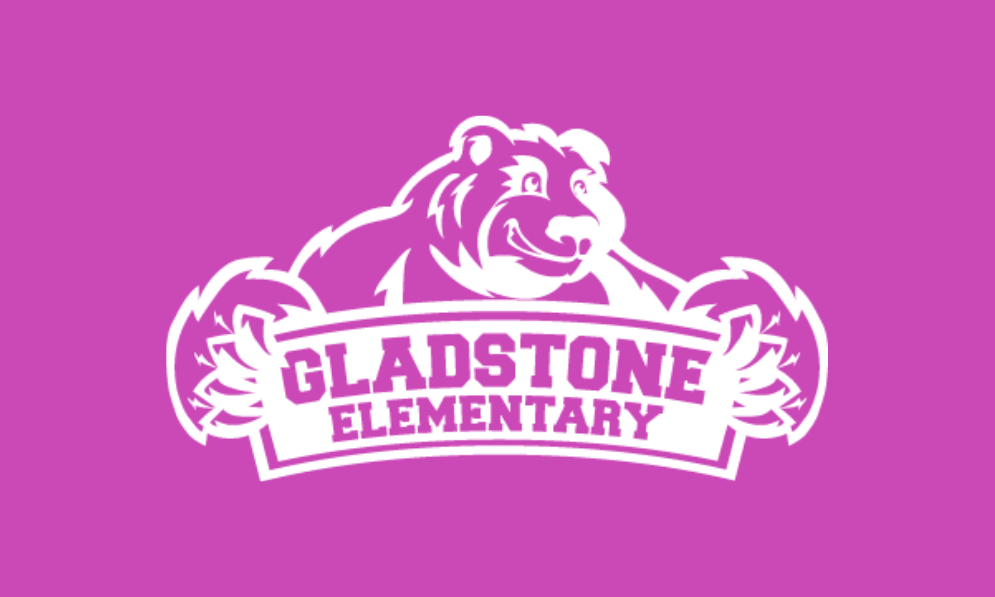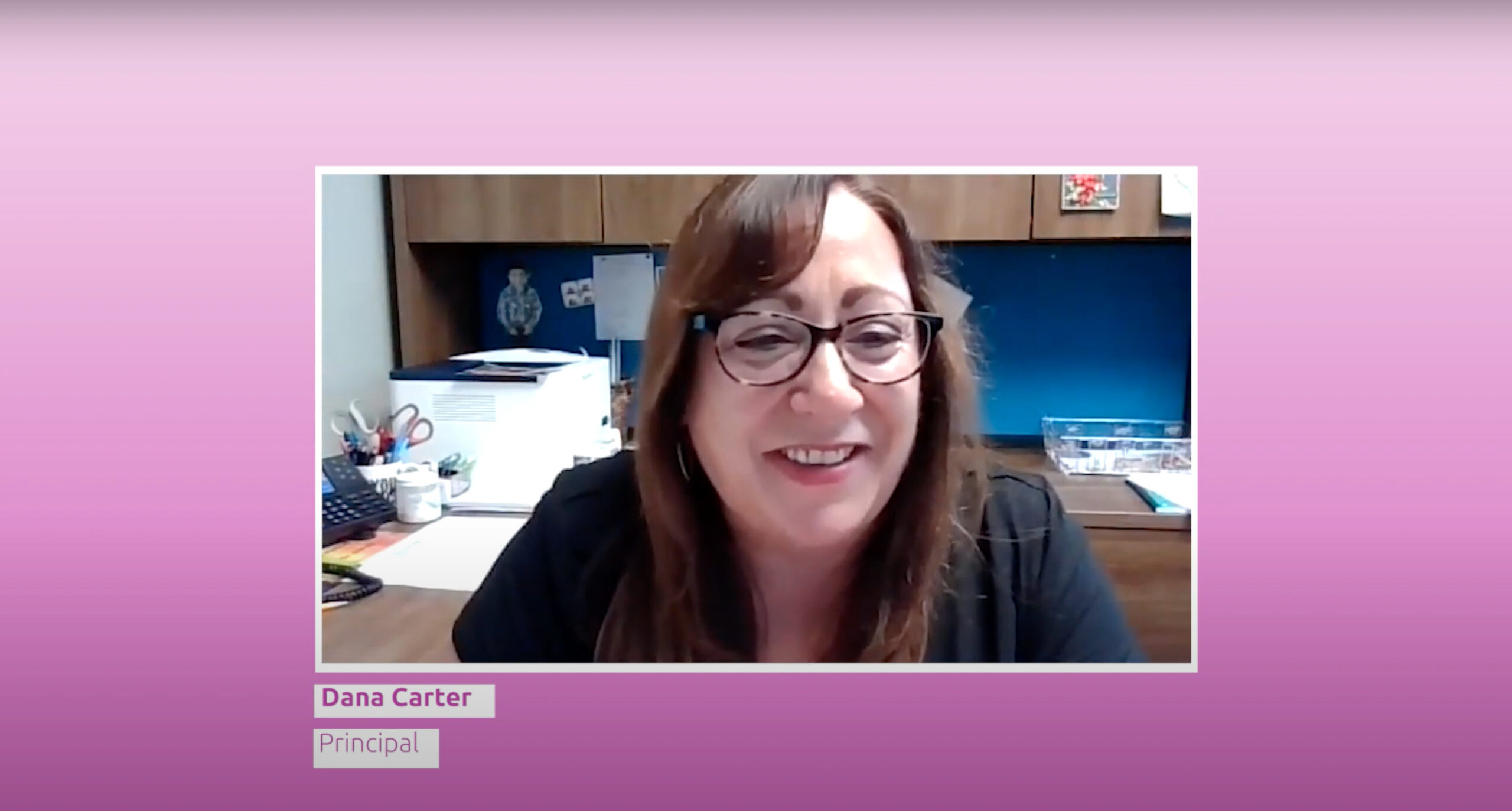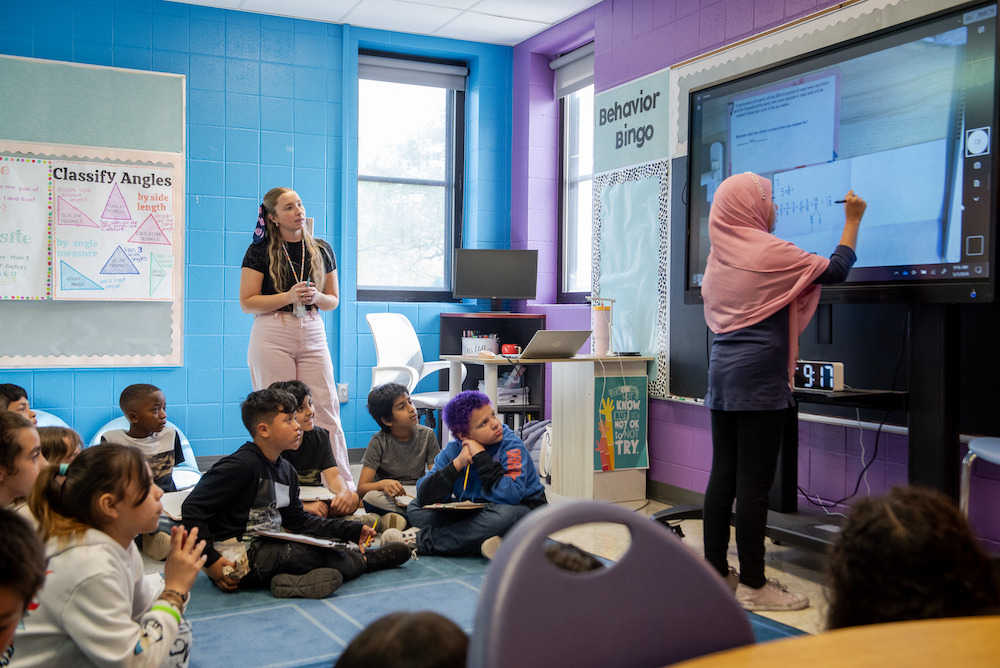
Using data to drive early literacy growth
Educators at Gladstone Elementary School are using an instructional data system to monitor and drive growth in K–2 reading foundational skills. This strategy is producing strong results: In just one year, the school saw a 58% increase in K–2 students reading on grade level.
—
Gladstone Elementary School is a K–6 school in Kansas City, Missouri, with significant refugee and new immigrant student populations. Instruction Partners has worked closely with Gladstone leaders and teachers for the past five years to support ongoing professional learning systems with the goal of raising the level of instruction so that all students can master grade-level content.
In the fall of 2021, following more than a year of virtual learning, Gladstone educators were looking for ways to improve literacy outcomes for their youngest students.
Principal Dana Carter, the school’s sole administrator, recalls, “I was really worried about our primary grades learning how to read and write, especially our K–1 students who hadn’t had a full year of school. So, coming back [from virtual learning], we knew that we were going to need to focus on foundational reading skills.”
The Instruction Partners team agreed that this was an essential focus for Gladstone’s youngest learners. Students’ reading progress in the first few years of school is more critical than at any other time—and interruptions during these years could have lasting consequences.
With the goal of accelerating foundational reading skills development, the team set out to create an instructional data system that would empower teachers to provide targeted reading support for K–2 students, while also empowering Principal Carter to provide targeted feedback and professional learning for K–2 teachers.
Identifying key instructional data
This system required collecting instructional data at the leader, teacher, and student levels:
- Leader data: Frequency of classroom observation and quality of feedback (How often is the leader observing classrooms? Are they normed on the classroom observation rubric? Is their feedback leading to a change in teacher practice?)
- Teacher data: Classroom observation notes and scores, participation in collaborative learning time, and qualitative survey feedback (Do teachers feel that their professional learning time is valuable?)
- Student data: Student outcomes on both curriculum-embedded assessments and nationally normed assessments (Are students demonstrating grade-level proficiency?)
Charlotte Hanson, Director of Instructional Support at Instruction Partners, reflects on this approach to data collection, “We wanted to get really clear on the data that would give [Principal Carter] the most accurate and efficient line of sight into different parts of the instructional system at Gladstone, in order to create independence and power for her as a single school leader.”
At the start of the 2021–22 school year, Gladstone already had two key professional learning structures in place: 1) collaborative planning and 2) observation and feedback. These structures allowed the Instruction Partners team to access the leader- and teacher-level data needed for continuously improving both Principal Carter’s leadership and teacher support.
Providing individualized support with student data
Accessing student-level data proved more challenging. It was clear that the school needed a literacy system that would allow teachers to track the specific skills that individual students had mastered, as well as where their students need further instruction and practice.
The first step in this process was adopting EL Education Skills Block, a high-quality foundational skills curriculum for K–2 students. Ahead of the 2021–22 school year, the Instruction Partners team led a full day of teacher professional learning focused on using the new curriculum, with an emphasis on small-group instruction. During that upfront training, teachers dug into the curriculum’s embedded assessments to better understand how to track students’ progress over time.
Teachers collected two levels of student data to provide individualized instruction and track progress throughout the school year:
- Benchmark assessment data: Three times per year, Gladstone students completed a one-on-one universal screener with their teacher to track proficiency toward grade-level benchmarks. Teachers used this data to assign students to small groups to receive individualized instruction based on their demonstrated skills.
- Progress monitoring data: In between benchmark assessments, teachers collected monthly data to monitor students’ mastery of individual skills. This allowed teachers and leaders to monitor pacing, identify needed interventions, and make projections of future performance.
The Instruction Partners team led monthly stepback meetings to share and reflect on instructional data. Ms. Carter used the data shared in these meetings to create short-term action plans—including selecting topics of focus for teachers’ collaborative planning time.
Ms. Carter reflected, “Those data meetings basically drove everything. It drove what I did; it drove what the teachers did; it drove what the students did. It was all-encompassing to everything that we needed to do to see growth.”
Driving student growth
The new approach to reading instruction is already resulting in unprecedented literacy growth for Gladstone students. At the start of the year, 0% of K–2 students were on grade level for reading foundational skills. By the spring of 2022, 58% of all K–2 students were reading on grade level, with 98% of kindergarten students reading on grade level.
Watch the short video below to hear Principal Dana Carter describe how the new instructional data system has transformed K–2 foundational skills instruction at Gladstone Elementary, and learn more about Instruction Partners’ approach to strengthening early literacy here.



